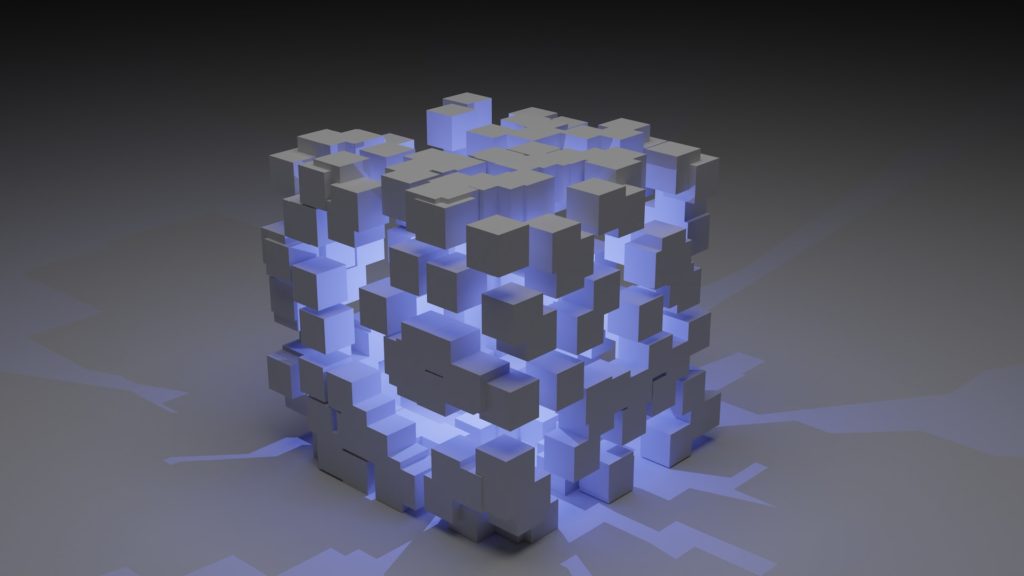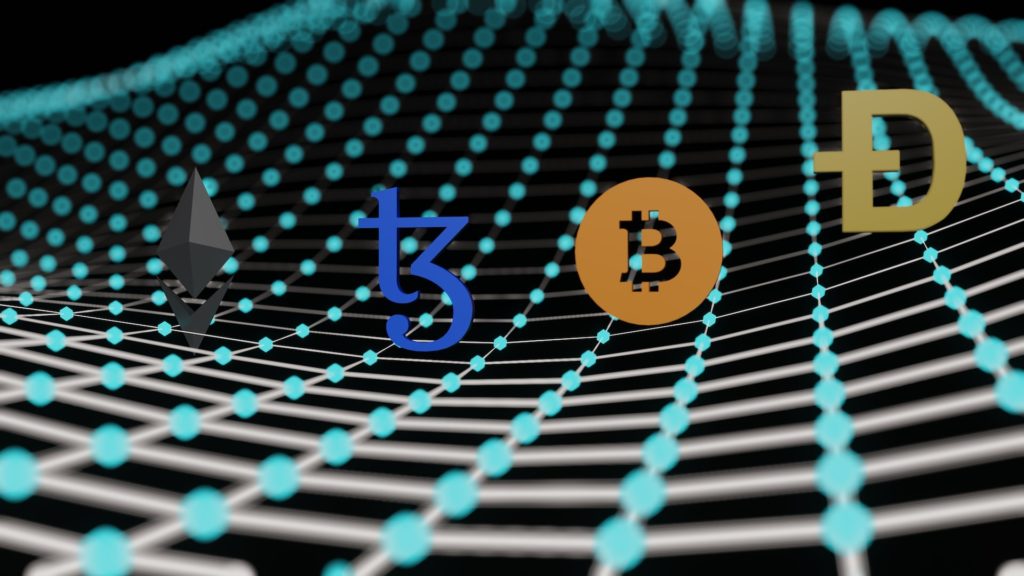If you have paid even the tiniest bit of attention to the blockchain gaming space, then you are already familiar with a three-letter word that has come to define this growing gaming sector in the past few years: play-to-earn. Play-to-earn games allow players to compete against each other in order to earn digital currency. Axie Infinity, the massive blockchain gaming juggernaut that aimed to reward players with real money in exchange for their time and effort, was the first to bring play-to-earn games, also known as P2E games, to the attention of the general public.

Axie has been on the radars of those who are terminally online for the past five years, but it feels like it was just yesterday. The game is still reeling from a massive hack that cost $615 million dollars today, and the recent decline in the value of cryptocurrencies, combined with reports that some of the game’s players came dangerously close to being exploited, has led to a steadily decreasing player base.
Developers of blockchain games believe that despite these setbacks, there is still room in the industry for a new industry titan to emerge. Players won’t be able to access any games that have overt messages encouraging them to “play to earn.” The sentiments expressed by Brazilian game developer Mark Venturelli are being echoed by a growing number of individuals working in the blockchain gaming industry, who are coming to the conclusion that play-to-earn mechanics do not belong in the gaming industry.
The next logical question is, then, what will take its place. Play-and-win video gaming. As an alternative to providing monetary rewards to players as an incentive to play, it is believed that providing players with actual ownership of their in-game rewards, items, and characters is the best way to move forward with this strategy.
When the integration of blockchain technology goes wrong
The play-to-earn model has resulted in a significant number of gamers all over the world being left holding the bag. Players who have invested dozens or even hundreds of hours into a game only end up with squandered time and collectibles that are no longer of any value when that game is discontinued or when the community that supported it withers away over time.
For example, when F1 Delta Time, one of the oldest existing NFT games on the market, abruptly shut down in April 2022 due to licensing issues, owners of its licensed NFT cars suddenly found that their utility vanished. This was the case because F1 Delta Time was one of the oldest existing NFT games on the market. At least you had your Hot Wheels to keep you occupied. These NFT cars were rendered useless once there was no game to accompany them.
Nevertheless, if one adopts an optimistic outlook and considers F1 Delta Time, it is challenging to assign the entire amount of blame to the programmers. The acquisition of licenses can be a challenging endeavor, and this is especially true of video games that intend to serve as platforms for ongoing live-service content many years after their initial release.
In terms of stability, it is difficult to find a solution that is significantly worse than basing an entire platform and in-game economy on a licensed product. The mods system in Minecraft, which was used by the people who later founded NFT Worlds, is admittedly quite complex. Now they have to actually build a game, just like their more successful contemporary, Decentraland, did.

The good news is that things move quickly in Web3, and it would appear that blockchain game developers are willing to experiment with new ideas. Although the NFT space as a whole continues to be rightfully skeptical of Pixelmon’s tentative second attempt at life following the massive backlash faced following its first mint, the contentious project’s newly installed leadership has demonstrated some familiarity with the broader blockchain gaming industry.
This is despite the fact that the first mint was met with a massive amount of resistance. For instance, Pixelmon’s new leadership seems to have a keen awareness of the increasingly negative optics associated with play-to-earn gaming. This is the second time around that the game has been released. Instead, it has shifted toward play-to-own, which is something that many developers working in this space are fully committed to.
The blockchain’s developers are moving away from the P2E model
But why should ownership even matter when it comes to gaming? It is everything, according to Michael Rubinelli, who serves as the Chief Gaming Officer for WAX. The WAX Exchange has become an industry thought leader since it has firmly established itself as a veritable hub for Web3 gaming.
Rubinelli expressed severe disapproval of the play-to-earn game model in an interview. Within the context of that discussion, he referred to it as a “failed horrible experiment.” Rubinelli, like Venturelli, is of the opinion that if a player has the opportunity to earn real-world money within a game, then that opportunity will invariably become the player’s primary focus while they are engaged in the activity of playing the game. rather than, you know, going out and having some fun.

A movement’s sole intent may be deduced from its name: “if you look at the title and see the word ‘earn,’ then that is the one and only purpose of that movement,” he continued. “Just like everyone else, the only thing I’m going to care about is the ‘earn’ part of it, is that correct? Because of this, you are going to attract people whose primary concern is making a profit or increasing their revenue.
The blockchain gaming movement is going to suffer a lot as a result of this. It causes a great deal of pain. It is dreadful, it causes cancer, and it is poisonous. And it should come as no surprise that it is destined to fail; in fact, everything that attempts to model itself after it is also destined to fail.
But where does this animosity toward games that allow players to win real money come from? To begin, it is what dishonest players are capable of doing once they get the ball rolling in a play-to-earn game. Every project ends in failure. The rugs can be pulled out. Because they were designed by people who are cruel and primarily concerned with making a profit for themselves, with perhaps a trace of consideration for the players, terrible things can and do occur in these worlds.
His next words were, “The gamers that profit do it in an unstable and unhealthy way, plus it generates all this scar tissue and all this reaction, and it’ll never ever work.” “There is no way that it could ever function.” Those participants who are successful in making a profit do it in a manner that is both unhealthy and unsustainable.
According to Rubinelli, the worst offenders are game developers who don’t even bother trying to make their games fun, but instead concentrate their marketing efforts on the incorporation of blockchain technology, even in the game’s title. The first thing you need to do is gain a better feel for the game.
The game needs to be enjoyable to play. If you aren’t enjoying yourself while you’re playing, there’s no purpose in continuing. Something along the lines of “I despise this but I do it anyway.” To be honest, I take that to be a job opportunity. It doesn’t have the sound of a video game at all. He remarked that it sounded like a burdensome video task.
A model that works
According to Rubinelli, the idea of ownership is one that has been prevalent in the gaming community for many years. The traditional gaming industry simply has not kept up with the times yet. Somehow. While discussing WAX’s newest game, Blockchain Brawlers, Rubinelli brought up the impressive background of one of the game’s key developers as well as the influence that his previous work has had on popular culture in general.

“Dude, it’s a game that was designed by Richard Garfield, the same guy who created Magic: the Gathering. Since the game’s inception in 1995, a total of 22 billion trading cards have been transacted between players.
WAX has not blatantly modeled this upcoming title to entice players with promises of financial gain; rather, they have established a system that has been proven to work for decades. It’s your own things that you want to lose when you win it, and the opposite is true when you lose it: you want to win it when you lose it. Therefore, even if you lose it, you still have a chance to get it back,” he explained.
Other developers working in this space have more expansive concepts of what play-to-own can entail as an experience. Blockchain technology, according to Don Norbury, Head of Studio for the upcoming first-person shooter (FPS) title Shrapnel for Web3, may make it possible for gamers to unlock deeper levels of storytelling while playing video games. Players are placed in a damaged near future where an asteroid collision causes the titular shrapnel to rain down on the earth. In order to collect scarce resources, players are required to compete against one another.
Norbury stated that “we believe that having strong world building — having your own theme and aesthetic that people can relate to and then, as a result, people might start to “find their own tale within it,” he told in interview today. We think that it is essential to have strong world building, meaning that you should have your own theme and aesthetic that people can relate to, so that they can then begin to build their own story within that world.”
“We are not developing a sandbox game in which players are given unlimited creative license to make anything they can conceive. You are going to be creating things that exist in the universe of Shrapnel. When we consider the more distant future, our objective and our vision is for the community to effectively take control of [the game].
To be more specific, Norbury has high hopes that this upcoming game will enable players to express themselves to that level through the creation of in-game maps. Norbury has high hopes that players will utilize the tools that Shrapnel provides to their full potential, much like they did in the Halo series’ Forge mode, which was very popular.
There will soon be a tipping point where player-created maps outnumber those made by developers. We anticipate that will take place in a very short amount of time. Our yearly content updates and free samples will, in the long run, amount to nothing more than a blip on the screen. That’s how we know we’ve done a good job of what we were supposed to do,” he explained.
A million-dollar idea
But what happens when a map from the video game Shrapnel becomes popular online? What if one of its players happens to develop the next genre of video game that ends up defining the industry? They will have full control over it, and they will face fewer challenges in their efforts to introduce it to the general public. Both Norbury and Rubinelli have demonstrated a deep comprehension of this possibility, which is impressive given that many of the most popular games in the world were originally fan-created modifications of existing games.

The first-person shooter (FPS) game Counter-Strike, which was originally a modification for Half-Life, gave birth to a new breed of fast-twitch, ultra-competitive FPS titles. The first major battle royale shooter was PlayerUnknown’s Battlegrounds (PUBG), which began as a modification for ARMA 2. DOTA 2 may be the only game that comes close to meeting Norbury’s expectations for the final product of the Shrapnel series.
DOTA 2 started out as a modification for Warcraft 3: The Frozen Throne and has since grown to become one of the most popular games on Steam. It rethought the gameplay of real-time strategy games and integrated it with the stat-based mechanics of role-playing games. Additionally, it was intended to be a purely competitive endeavor. But what made it so revolutionary, and what was in line with Shrapnel’s goals as a title, was the fact that it did all of that while at the same time giving millions of gamers a way to engage more deeply with the lore and characters of World of Warcraft.
A paradigm shift in gaming known as “play-to-own” has made it possible for concepts to finally reclaim center stage, placing them above the allure of the promise of in-game rewards. We believe that more community involvement and value are required for an economy to be really healthy and self-sustaining. And a significant portion of that for us comes from the content that was created by players and rises to the top. In addition to that, it is an extremely valuable contribution from the community.
Therefore, when we talk about production input, we’re not just referring to the people who are, for instance, making maps. Norbury clarified what they meant when they said that “we mean real, useful activities that the community is doing in the Shrapnel universe,” we explain.
Disclaimer: The opinion expressed here is not investment advice – it is provided for informational purposes only. It does not necessarily reflect the opinion of EGG Finance. Every investment and all trading involves risk, so you should always perform your own research prior to making decisions. We do not recommend investing money you cannot afford to lose.
 English
English Français
Français Español
Español Bahasa Indonesia
Bahasa Indonesia 中文 (中国)
中文 (中国) Русский
Русский Português
Português Deutsch
Deutsch

